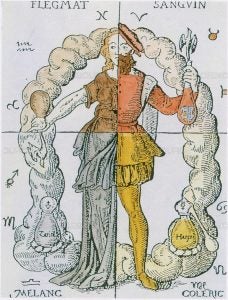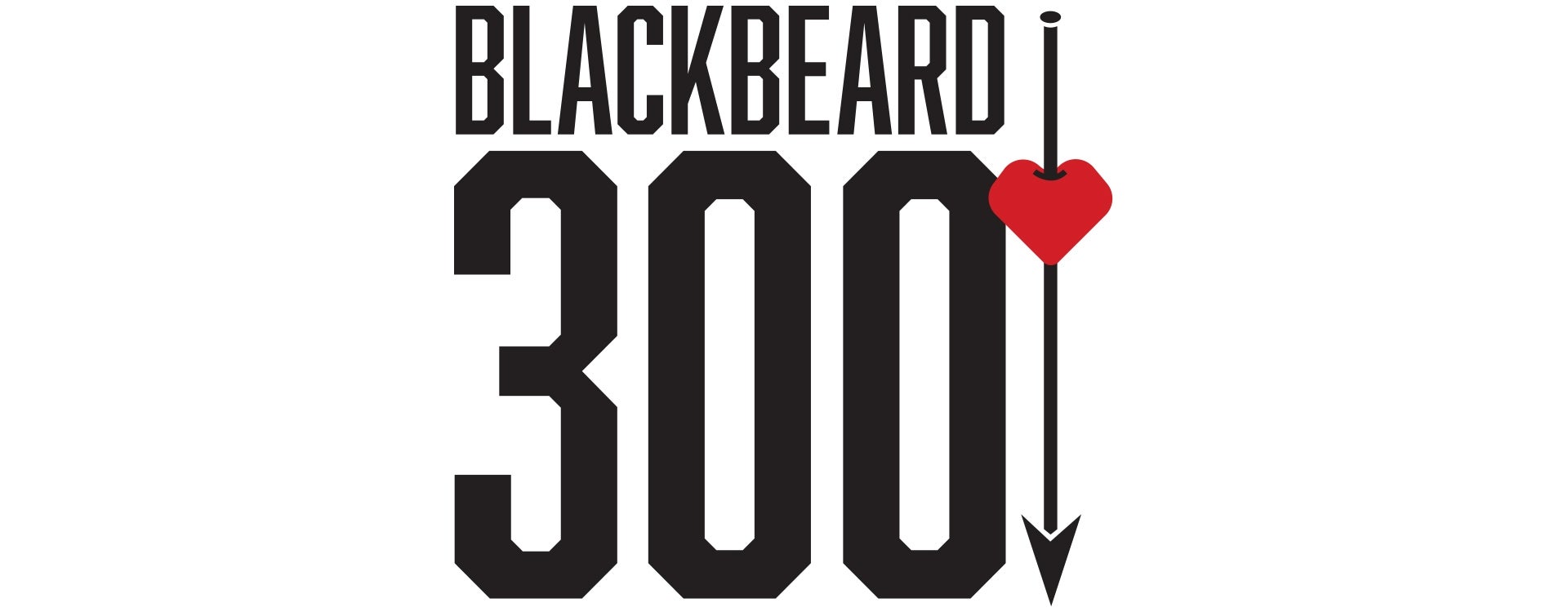Designing “The Plague of Piracy”
Contributed by Sara Mackenzie Parkin, Laupus Library History Collections Graduate Assistant
2018 is the 300th anniversary of Blackbeard’s death in North Carolina. In commemoration of this, a series of exhibits and events called “Blackbeard 300” were planned. The Plague of Piracy exhibit is a collaboration between Laupus Library and the Queen Anne’s Revenge Conservation Lab as part of Blackbeard 300. The QAR Lab produced replicas of three medical artifacts that were recovered from the shipwreck for the exhibit: a urethral syringe, a large nesting weight, and a cautery iron. The rest of the exhibit was designed around these artifacts to highlight the story of the Queen Anne’s Revenge, as well as the medical history of the era.
Blackbeard was a feared pirate throughout the Caribbean and Atlantic. His head-on tactics of brute force differed from his contemporaries who preferred quick and quiet attacks from small boats. The fear, awe, and terror he inspired in people through his daring raids transformed Blackbeard into a legend. The story of Blackbeard’s capture of La Concorde and his raid on Charleston is highlighted in our exhibit, followed by the wrecking event, discovery, and ongoing conservation. It was important to briefly summarize the story of the Queen Anne’s Revenge in order to contextualize the artifacts in the exhibit.
I also wanted to include artifacts in the exhibit that would complement the QAR artifacts and help illustrate the medical artifacts we did not receive for the display. With help from The Country Doctor Museum in Bailey, North Carolina, we chose a bronze mortar, a set of nesting weights, and some apothecary jars to add to the exhibit.

Bronze Mortar from The Country Doctor Museum Collection – CDM2003.649.001 (Image taken by the author 11/6/18)
This mortar was selected from The Country Doctor Museum’s collection because of its similarities to the mortar found in the wreckage of QAR. While there is an image of the conserved mortar and pestle from Queen Anne’s Revenge in the exhibit, the mortar from The Country Doctor Museum allows the viewer to see a similar bronze mortar that had not been underwater for 300 years. However, even the bronze seashell mortar was in need of conservation when it came to us. Our Collections Manager removed some dirt and debris from the surface before we placed it in the exhibit.
The nesting weights recovered from QAR are a cup style. Each of the cups fit inside of each other, like a typical set of measuring cups in a kitchen might. Then the largest cup has a lid to keep all the weights together. Only the largest of the nesting weights was replicated, but I wanted to represent them as they would have been – in a set. Although The Country Doctor Museum could not loan their full set of cup weights, they were able to provide a different style of weights which I thought would help augment the single Queen Anne’s Revenge weight replica.

Four Nesting Weights from The Country Doctor Museum Collection – CDM2014.100.0014 (Image taken by the author 11/6/18)
These puck-shaped weights work in the same manner as the weights from Queen Anne’s Revenge. Using a scale and the selected weight, medicine would have been measured out until the scales were even. This set includes some exceptionally large weights made of iron, but the four smallest weights are made of bronze. I selected three of the smallest weights to include in the exhibit.
The apothecary jars used in the exhibit were chosen for their material, not their shape. Both jars have the characteristic “crackle” exterior that white ware of the period would eventually show. Their size and purpose is also equitable to that of the jars recovered from the Queen Anne’s Revenge, however, their shape is different. The Country Doctor Museum’s jars are short, with little flat lids, presumably so they would fit better inside the doctor’s chest from which they came. The jars recovered from the QAR wreck are taller, with a slight bottleneck at the top.

Two Apothecary Jars from The Country Doctor Museum Collection – CDM2014.200.0674 (Image taken by the author 11/6/18)
It was important to me when designing this exhibit to contextualize the artifacts in relation to the ship’s past and the recovery of the artifacts from the wreck site. Additionally, to understand the artifacts, it was necessary to explain the theory of medicine during the early 1700s and the common ailments seafarers for which seafarers might have needed treatment. Injecting a patient with mercury sounds crazy to us now, but ingesting heavy metals was commonplace in humoral medicine. Medical practice often treated the symptoms instead of the cause, and therapeutics were based on balancing out those symptoms. A treatment for a fever that is considered hot and dry would prompt the physician to prescribe something cold and wet to “balance” the patient.

Four Humors, from Book of Alchemy by Thurn-Heisser, Leipzig, Germany (1574)
Queen Anne’s Revenge has been extensively studied, but there is still so much to learn from this 18th century French vessel. From capturing the ship’s surgeons to holding citizens of Charleston for ransom, the adventures and medical material culture of this ship has left us with both history and archaeology to analyze. There is a brochure available at the exhibit with some additional information about the history of Queen Anne’s Revenge as well as the archaeological excavation. Also included in the brochure is a list of references used for this exhibit, which are listed below as well.
The Plague of Piracy is on display on the second floor of Laupus Health Sciences Library.
References
Bennion, Elisabeth
1979 Antique Medical Instruments. University of California Press, Berkeley, CA.
Brown, Kevin
2011 Poxed and Scurvied: The Story of Sickness and Health at Sea. Naval Institute Press, Annapolis, MD.
Carnes-McNaughton, Linda F.
2016 Mariner’s Maladies: Examining Medical Equipage from the Queen Anne’s Revenge Shipwreck. North Carolina Archaeology Vol. 65:28-52.
Carpenter, Kenneth J.
1986 The History of Scurvy and Vitamin C. Cambridge University Press, Cambridge, UK.
Cuppage, Francis E.
1994 James Cook and the Conquest of Scurvy. Greenwood Press, Westport, CT.
Defoe, Daniel
1724 A general history of the pyrates: from their first rise and settlement in the Island of Providence, to the present time. T. Warner, London.
Dosset, Pierre
1718 La Concord de Nantes Plundered and Taken by Pirates. Archives Departementales de Loire- Atlantique, Serie B 4578, Folie 56v-57v. Nantes, France.
Druett, Joan
2000 Rough Medicine: Surgeons at Sea in the Age of Sail. Routledge, New York, NY.
Ducoin, Jacques
2001 Compte Rendu de Recherches dans les Archives Francaises sur le Navire, Nantais La Concorde Capture par des Pirates en 1717. Manuscript on file at North Carolina Department of Cultural Resources, Division of Archives and History, Raleigh, NC.
Ernaut, Francois
1718 La Concord de Nantes Plundered and Taken by Pirates. Manuscript, Serie B 4578, Folie 56v-57v, Archives Departementales de Loire-Atlantique, Nantes, France.
Hahn, John
1798 Observations and experiments on the use of enemata, and the external applications of medicines to the human body. Stephen C. Ustick, Philadelphia, PA.
Haycock, David Boyd, and Sally Archer, eds.
2009 Health and Medicine at Sea: 1700-1900. The Boydell Press, Woodbridge, UK.
Jackson, William A.
2001 A short guide to humoral medicine. Trends in Pharmacological Sciences. Vol. 22, Issue 9, September 1, 2001, pp. 487-489.
Lind, James
1980 A Treatise on the Scurvy, in Three Parts: Containing an Inquiry into the Nature, Causes, and Cure, of that Disease. The Classics of Medicine Library, Birmingham, AL.
Lusardi, Wayne R.
2000 The Beaufort Inlet Shipwreck Project. The International Journal of Nautical Archaeology 29.1:57-68.
Mettler, Cecilia C., and Fred A. Mettler, ed.
1947 History of Medicine: A Correlative Text, Arranged According to Subjects. The Blakiston Company, Philadelphia, PA.
Moore, David D. and Mike Daniel
2001 Blackbeard’s Capture of the Nantaise Slave Ship La Concorde: A Brief Analysis of the Documentary Evidence. Tributaries Vol 11:14-31.
Wilde-Ramsing, Mark U., and Linda F. Carnes-McNaughton
2018 Blackbeard’s Sunken Prize: the 300-year Voyage of Queen Anne’s Revenge. The University of North Carolina Press, Chapel Hill, NC.
